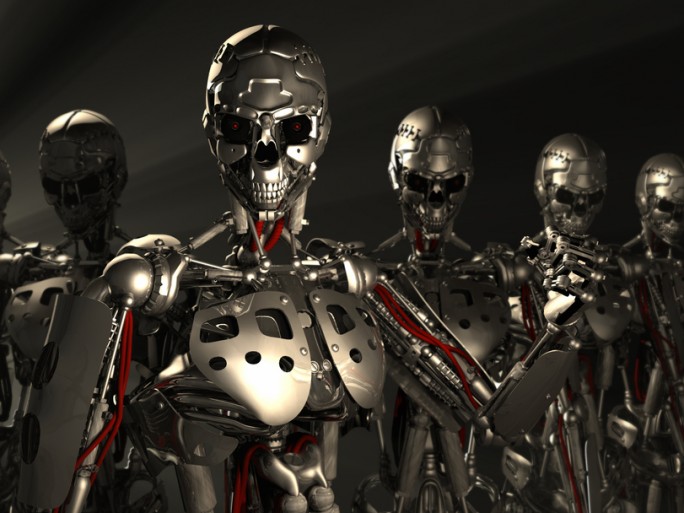An American scientist has developed a mathematical model to demonstrate that bacteria can control the behaviour of an inanimate device like a robot.
Now scientists are proposing mobile robots infused with a living bacteria brain onboard.
Bacteria Brains
 The development was made by Warren Ruder, assistant professor at the Department of Biological Systems Engineering at VirginiaTech. He published a paper in Scientific Reports, in which Ruder used a mathematical model to demonstrate that bacteria can indeed control the behaviour of an inanimate device like a robot.
The development was made by Warren Ruder, assistant professor at the Department of Biological Systems Engineering at VirginiaTech. He published a paper in Scientific Reports, in which Ruder used a mathematical model to demonstrate that bacteria can indeed control the behaviour of an inanimate device like a robot.
“Basically we were trying to find out from the mathematical model if we could build a living microbiome on a nonliving host and control the host through the microbiome,” said Ruder. “We found that robots may indeed be able to function with a bacterial brain.”
For future experiments, Ruder is apparently building real-world robots that will have the ability to read bacterial gene expression levels in E. coli using miniature fluorescent microscopes. The robots will respond to bacteria he will engineer in his lab.
It is thought the development could have far reaching implications in ecology, biology, and robotics.
Ruder cites the example in agriculture sector, where a bacteria-robot model system could enable robust studies that explore the interactions between soil bacteria and livestock. In healthcare, further understanding of bacteria’s role in controlling gut physiology could lead to bacteria-based prescriptions to treat mental and physical illnesses. Ruder also envisioned droids that could execute tasks such as deploying bacteria to remediate oil spills.
Apparently Ruder was inspired by real-world experiments where the mating behaviour of fruit flies was manipulated using bacteria, as well as mice that exhibited signs of lower stress when implanted with probiotics.
A Youtube video of the development can be found here.
In Ruder’s mathematical model, the theoretical robot was equipped with sensors and a miniature microscope to measure the colour of bacteria telling it where and how fast to go depending upon the pigment and intensity of colour.
The model also revealed some surprising behaviour.
As the bacteria was directing the robot toward more food, the robot paused before quickly making its final approach – a classic predatory behaviour of higher order animals that stalk prey.
Robot Future
Robots are playing an increasing role in society today. Last month French engineering giant Thales revealed it will soon offer robots that would replace the traditional immigration officers who greet airline passengers at airports.
And American punters can now purchase Softbank’s ‘emotional’ robot. The Pepper robot, is a 4 foot high robot that can dance and make human-like movements and body language thanks to more than 20 different motors and highly articulated arms.
But some are worried about the future, especially if artificial intelligence is added to the mix, with today’s news cinubg amid growing concerns about the advances made with artificial intelligence (AI) and its potential impact on the human race.
In May Professor Stephen Hawking reiterated his warning that robots and artificial intelligence could spell the end of life as we know it on Planet Earth.
Last October, Elon Musk, the South Africa-born inventor and entrepreneur best known as the co-founder of PayPal and chief executive of both SpaceX and Tesla Motors, warned against the dangers of artificial intelligence (AI), describing it as an “existential threat”.
Apple co-founder Steve Woziak however has changed his mind and no longer fears AI. He predicted that, in the future, the world will be controlled by artificial intelligence (AI) and that robots will treat humans as their pets.
Are you a Robot expert? Take our quiz!




